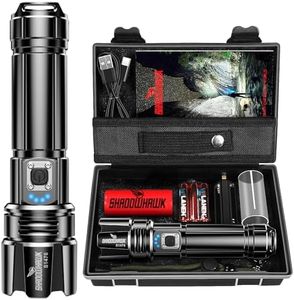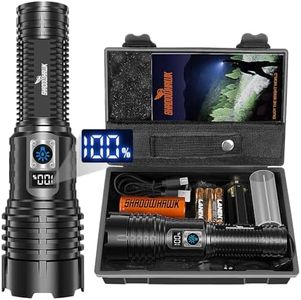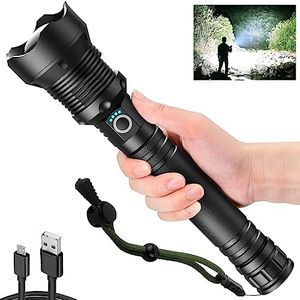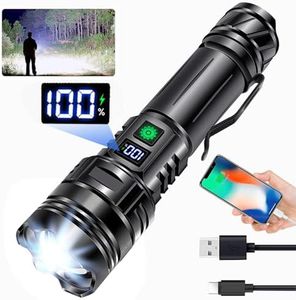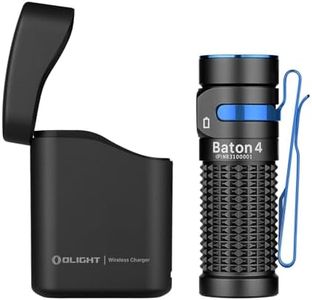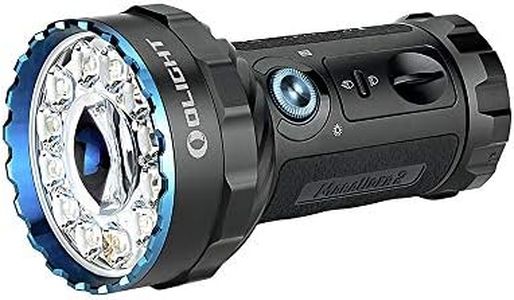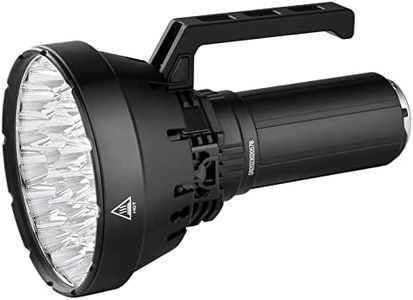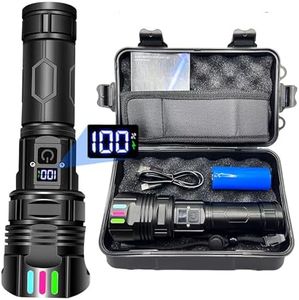We Use CookiesWe use cookies to enhance the security, performance,
functionality and for analytical and promotional activities. By continuing to browse this site you
are agreeing to our privacy policy
10 Best High Power Flashlights
From leading brands and best sellers available on the web.Buying Guide for the Best High Power Flashlights
Choosing a high-power flashlight can seem intimidating with so many technical terms and features, but it all comes down to knowing what you need it for. Whether you need a flashlight for outdoor adventures, home emergencies, or tactical use, the key is to balance brightness, battery life, portability, and durability. Think about how often you'll use it, in what conditions, and what activities matter most to you. Once you've clarified your needs, you can start comparing the important specifications to make a confident choice.Lumens (Brightness)Lumens measure the total amount of visible light a flashlight emits. This is the main indicator of brightness: the higher the lumens, the brighter the beam. Flashlights range from a couple of hundred lumens (good for close-up tasks) to several thousand lumens (ideal for long-range vision or lighting up large areas). For general household or occasional outdoor use, lower lumens will suffice, but for activities like hiking, search and rescue, or security, you’ll want more. Select the lumen level according to how much light you need and how far you want the beam to reach.
Beam DistanceBeam distance tells you how far the light from your flashlight will shine before it dims to the equivalent of full moonlight. This is measured in meters. Shorter beam distances are suitable if you'll be using the flashlight inside, for walking at night, or looking around camp. Longer beam distances are important if you need to see far ahead on trails, during search operations, or in open spaces. Think about where you'll use your flashlight most and let that guide your choice.
Battery Type and RuntimeThe type of battery and how long it lasts (runtime) affect convenience and effectiveness. Options include disposable (like AA or AAA) and rechargeable (built-in lithium-ion) batteries. Rechargeable batteries are more environmentally friendly and cost-effective for frequent use, while disposables are handy for emergencies or infrequent use. Pay attention to the stated runtime at different brightness settings—if you’ll be using high power for extended periods, prioritize a model with longer runtime or swappable batteries.
Size and WeightA flashlight's size and weight influence comfort and portability. Large, heavy models can generate more light and last longer, but they're bulkier to carry or store. Slimmer, lighter flashlights are easier to handle and carry but may have less power or shorter runtime. Match the size and weight to your intended activity: portability for hiking or backpacking, and weightier models for stationary or emergency use.
Durability and Water ResistanceDurability relates to how tough the flashlight is—think shock resistance and build quality—and water resistance shows how well it can handle wet or harsh conditions. Many flashlights list an IP (Ingress Protection) rating, like IPX4 or IPX8. Lower ratings can handle occasional splashes, while higher ones are suitable for heavy rain or even submersion. If your flashlight will be exposed to the elements or tough use, prioritize models with higher protection and sturdy construction.
Modes and ControlsMany high-power flashlights offer multiple lighting modes, like low, medium, high, strobe, or SOS. These modes let you select the intensity or pattern of light, which can help save battery or signal for help in emergencies. The controls should be easy to use in the dark or with gloves. If you want versatility, choose a flashlight with several modes; for simple use, a straightforward on-off switch may be enough.


